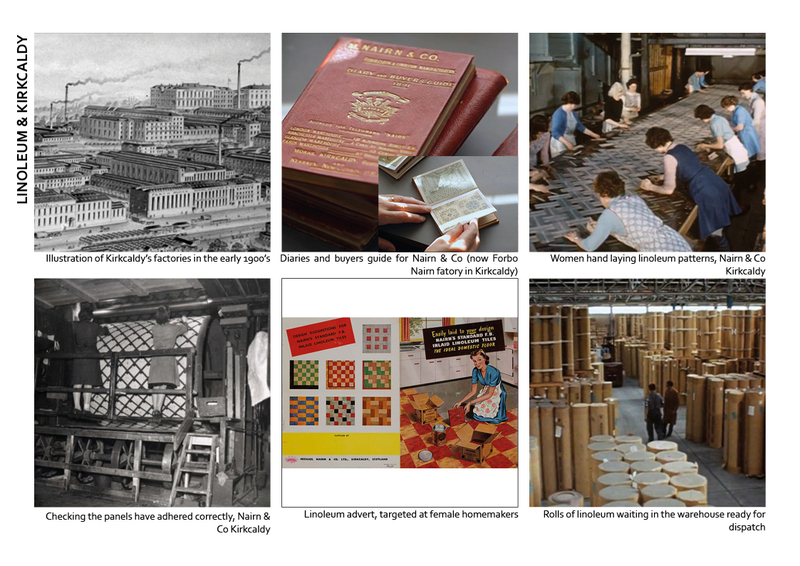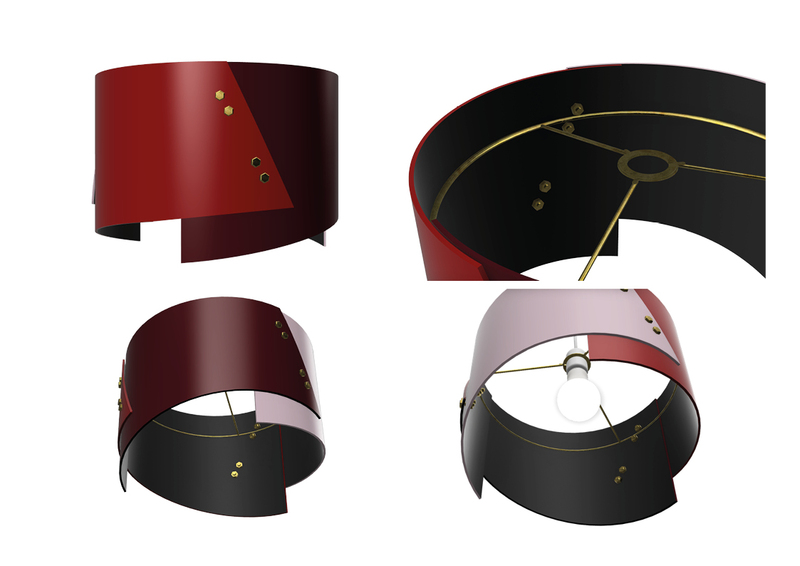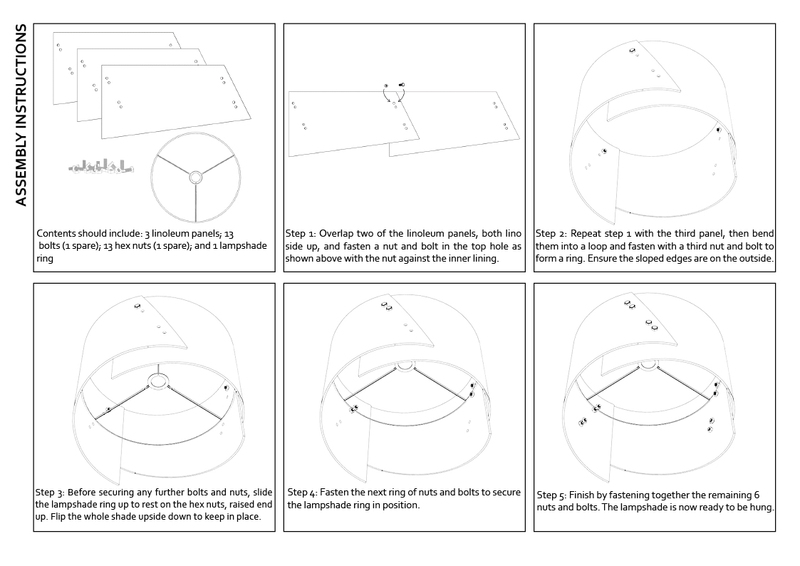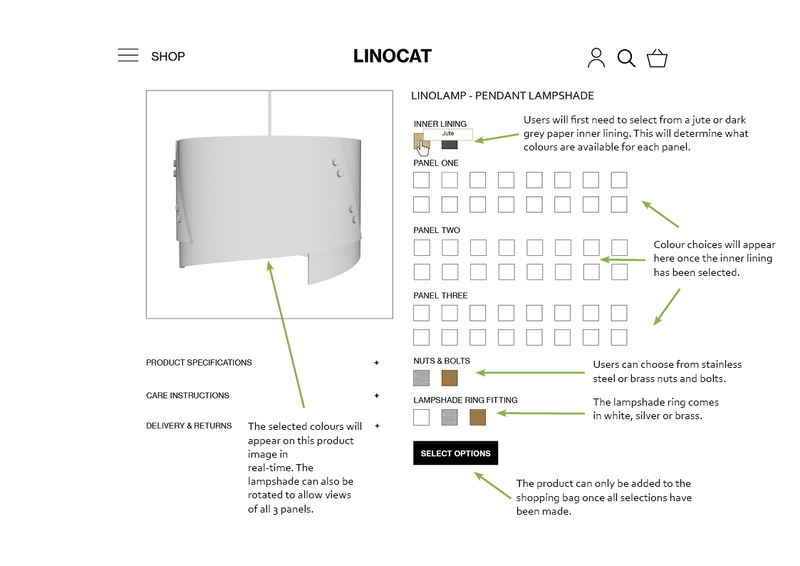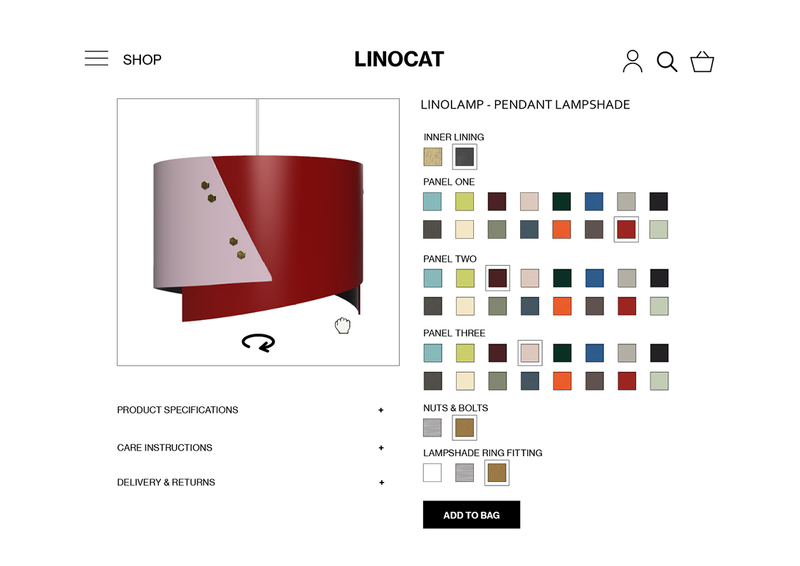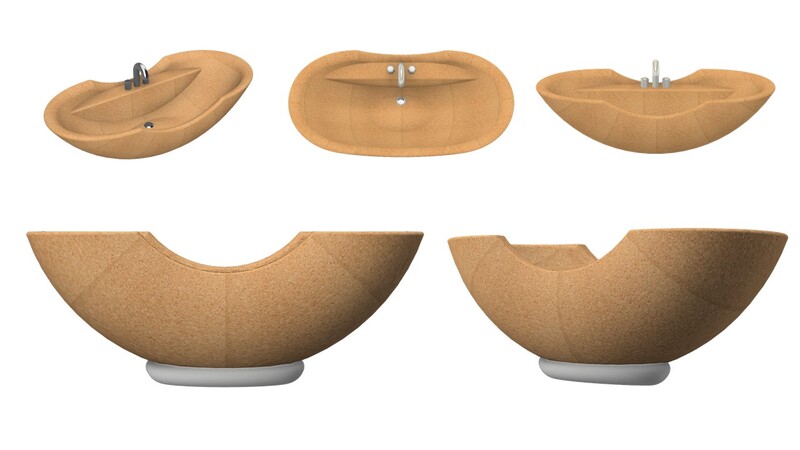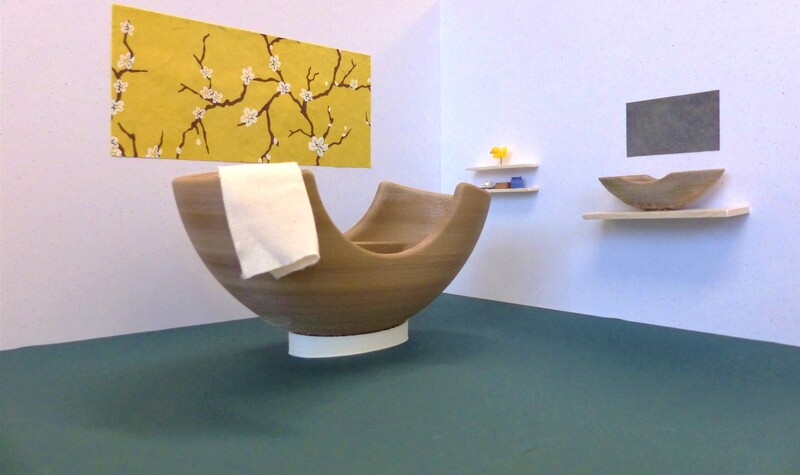Catriona Brown
The sustainability of the design industry has been under increasing scrutiny, first for fast-fashion and textiles and now flatpack chipboard furniture behemoths who have encouraged the same throwaway culture. Keenly priced, ready-made furnishings have democratised design for many, but promotes the use of cheap, unsustainable resources – typically combinations of plastic, wood chips, glue and laminate – which can be complicated and expensive to recycle. Against this backdrop, I aimed to explore how to promote the wider use of environmentally friendly materials and to encourage and allow more people to consider purchasing eco-friendly products.
Project 1: Linoleum Lamp Shade
Objectives:
Develop products that are connected to place through traditional materials or production methods
Develop designs with authentic local production narratives and higher material qualities, to support greater consumer connectivity, and enhance product longevity in comparison to anonymous mass-produced products
Utilise linoleum as an all-natural floor covering synonymous with Kirkcaldy in Scotland, to create an accessibly priced, flat-pack lampshade as part of a wider ambition to develop products that support green design and manufacture
Project 2: Cork Bath
Objectives:
Expand people’s perceptions of the usefulness of cork beyond wine stoppers and bulletin boards
Draw on the many properties of cork (good surface grip, warm to touch, anti-bacterial) to highlight the use of cork for its superior performance and promote a wider adoption of the material
Encourage wider usage of cork to increase cork tree forest plantations that support diverse ecosystems, and further the economic sustainability of Portuguese communities

